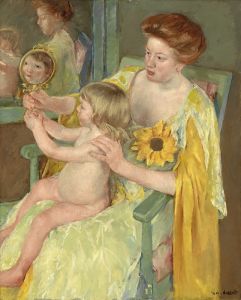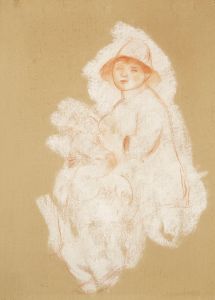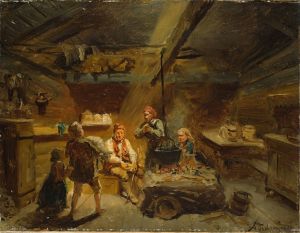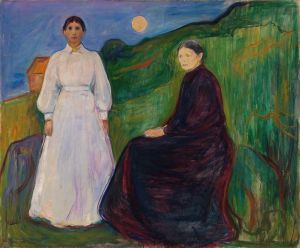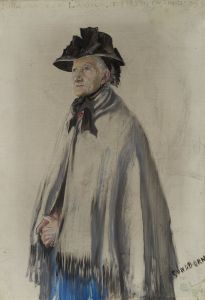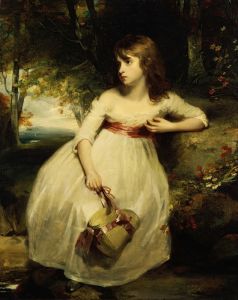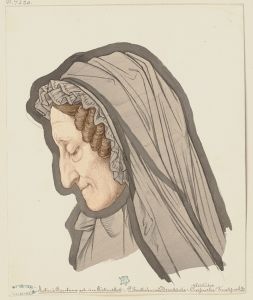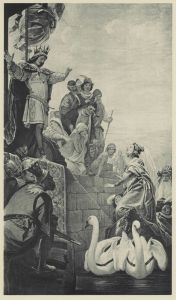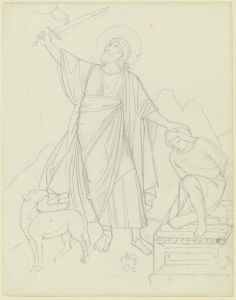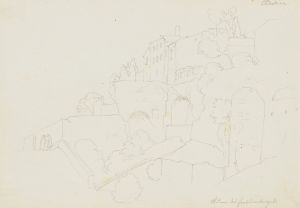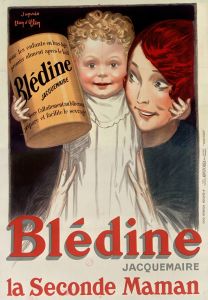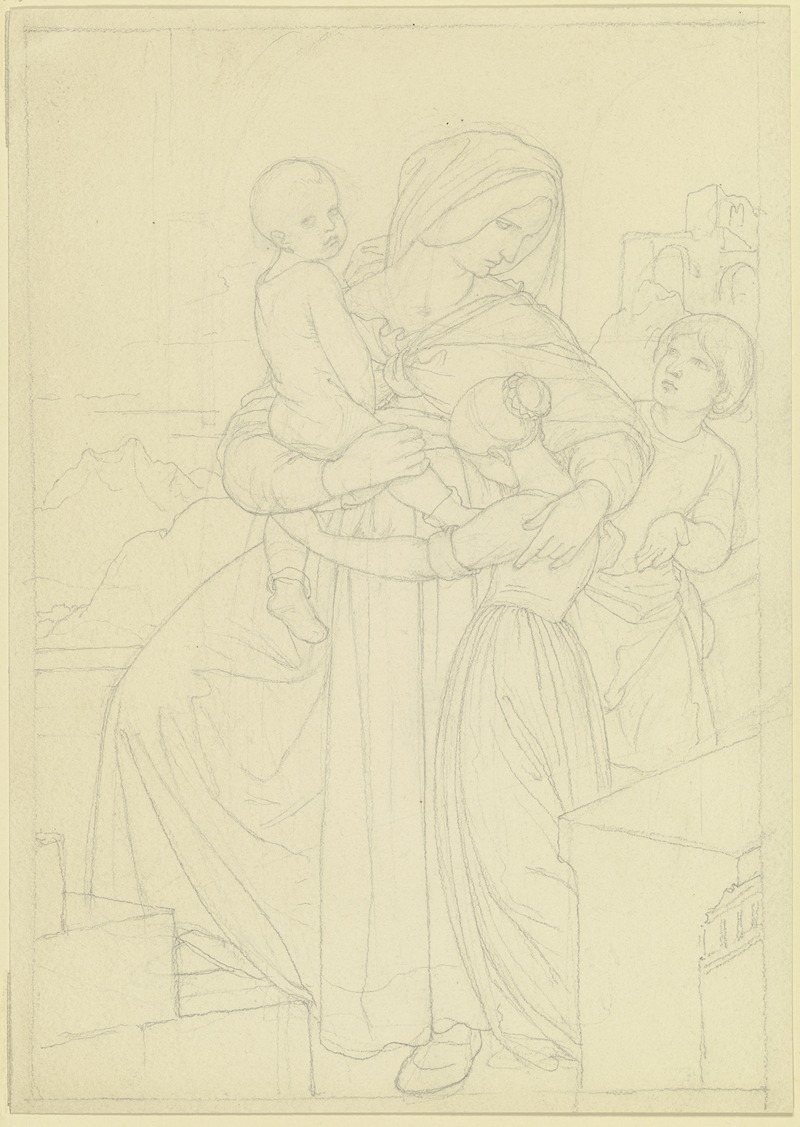
Mother with three children
A hand-painted replica of Eduard von Steinle’s masterpiece Mother with three children, meticulously crafted by professional artists to capture the true essence of the original. Each piece is created with museum-quality canvas and rare mineral pigments, carefully painted by experienced artists with delicate brushstrokes and rich, layered colors to perfectly recreate the texture of the original artwork. Unlike machine-printed reproductions, this hand-painted version brings the painting to life, infused with the artist’s emotions and skill in every stroke. Whether for personal collection or home decoration, it instantly elevates the artistic atmosphere of any space.
Eduard von Steinle was a notable 19th-century German painter associated with the Nazarene movement, which sought to revive honesty and spirituality in Christian art. His works often reflect religious and historical themes, characterized by a detailed and idealized style. However, specific information about a painting titled "Mother with Three Children" by Eduard von Steinle is not readily available in historical records or art databases.
The Nazarene movement, to which Steinle belonged, was founded in the early 19th century by a group of young German artists in Rome. They aimed to return to the purity and spirituality of medieval and early Renaissance art, rejecting the neoclassical style that was prevalent at the time. Steinle, influenced by this movement, often incorporated religious and moral themes into his works, focusing on clarity, simplicity, and a deep sense of devotion.
Eduard von Steinle was born in Vienna in 1810 and later moved to Frankfurt, where he became a professor at the Städelschule, an influential art school. His teaching and works significantly impacted the development of religious art in Germany during the 19th century. Steinle's oeuvre includes frescoes, altarpieces, and illustrations, many of which are housed in churches and museums across Europe.
While specific details about "Mother with Three Children" are not documented, Steinle's other works often depict scenes of familial and religious significance, characterized by a gentle and harmonious composition. His paintings typically feature soft color palettes and a meticulous attention to detail, reflecting the influence of early Renaissance artists such as Fra Angelico and Raphael.
Steinle's contribution to art extends beyond his paintings; he was also involved in the design of stained glass windows and other ecclesiastical decorations. His work in this area further underscores his commitment to the ideals of the Nazarene movement, emphasizing the integration of art and spirituality.
Despite the lack of specific information about "Mother with Three Children," Eduard von Steinle's legacy as a key figure in 19th-century religious art remains significant. His dedication to reviving the spiritual essence of art and his influence as a teacher helped shape the direction of German art during his time. Steinle passed away in Frankfurt in 1886, leaving behind a body of work that continues to be appreciated for its beauty and spiritual depth.
For those interested in exploring Steinle's art, many of his works can be found in public collections and churches, where they continue to inspire viewers with their serene and contemplative qualities. His role in the Nazarene movement and his contributions to religious art make him a noteworthy figure in the history of 19th-century European painting.





